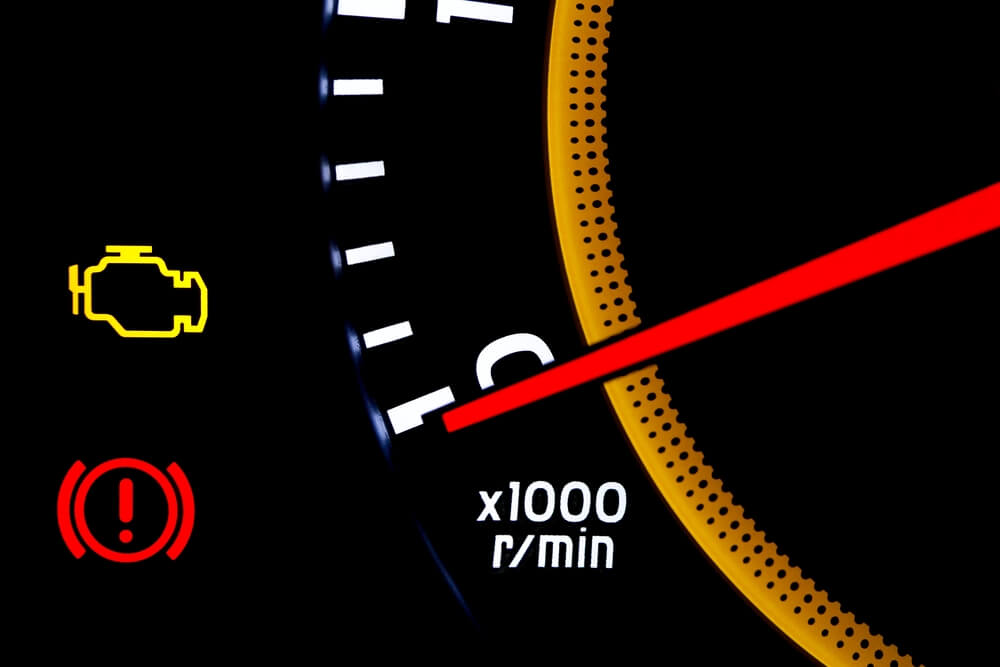You’re driving down the highway and all of a sudden a warning light pops up on the dash. You pull over and thumb through your owner’s manual to find it’s only the low washer fluid warning – something you’ll want to address, but not exactly a sign of imminent danger. No warning light should be ignored, however, so we’ve comprised a list of the top five most important.
Low oil pressure
This warning light looks like a harmless genie bottle, but it certainly won’t be granting any wishes. The low oil pressure light means the powertrain control module (PCM) has determined a low oil pressure condition. The PCM monitors oil pressure via the oil pressure sensor. The oil pressure warning light may illuminate because of low oil level, internal engine problems, or faulty pressure sensor. A low oil level should be addressed immediately to prevent engine damage. If this light comes on, stop driving and have the issue inspected by a professional as soon as possible.
High engine temperature
This warning light generally looks like a thermometer and is used to indicate an engine overheating condition. Overheating can cause extensive engine damage, so if you see this light, you should pull over and turn off your vehicle immediately. There are numerous reasons for engine overheating, ranging from a stuck thermostat to a blown head gasket. It’s best to have a professional inspect and diagnose the exact cause.
Check Engine Light
This warning light generally looks like a crude rendition of an engine. An illuminated Check Engine Light can indicate a harmless emissions fault, such as a loose gas cap, but it can also indicate something more serious, like an internal engine problem. For example, a worn camshaft lobe can cause a misfire and turn on the Check Engine Light. If you keep driving with the Check Engine Light on, you risk increasing the seriousness of the problem. Get your car scanned for trouble codes and repaired as soon as possible.
Charging system malfunction
This light looks like a battery and indicates a problem with the charging system. This is important, because if the battery is not being properly charged, you may be stuck on the side of the road with your thumb in the wind. Potential causes include, but are not limited to, a faulty alternator, bad battery or damaged wiring.
Anti-lock brake system malfunction
- Many lives have been saved since the introduction of anti-lock brakes (ABS). ABS is used to prevent wheel lock up in the event of an emergency stop. This is accomplished by means of an ABS module that monitors input from wheel speed sensors. When the module determines brake lock up may occur, it will pulse brake pressure to the appropriate wheel to prevent that from happening. An illuminated ABS warning light means the module had determined a fault in the system. When this happens, the system will default to non-ABS braking and your braking ability and safety will be compromised.
- These are the top five dashboard bad boys. Pay heed to these warning lights to keep both you and your vehicle rolling smooth and safe for many miles to come.
- —
- Mia Bevacqua works at YourMechanic.com. Have your own question about service terms or anything else auto related? You can ask one of their highly trained technicians and get an answer quickly, usually within 24 hours.

